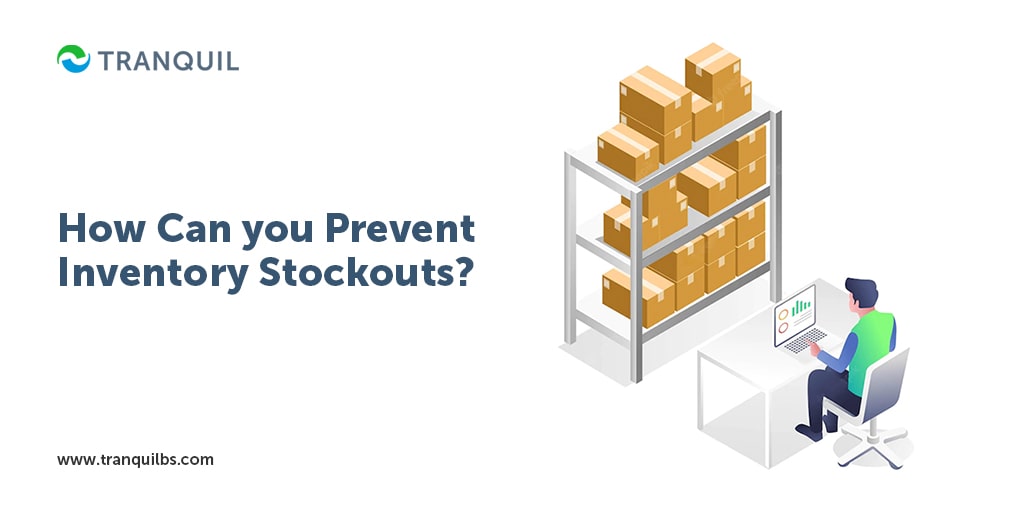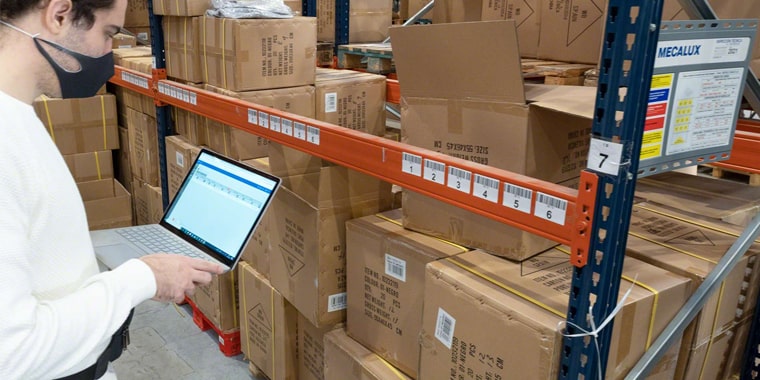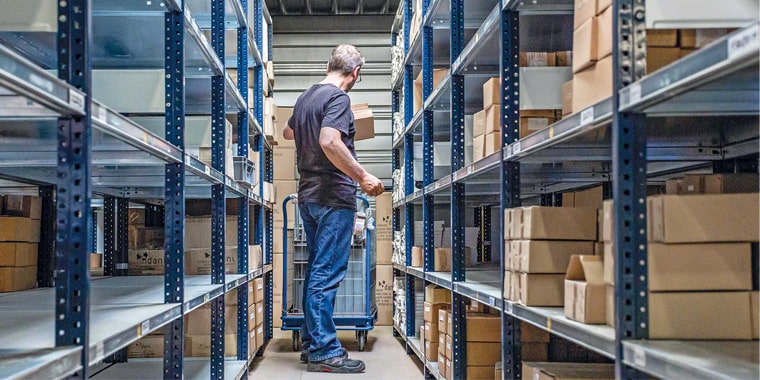
Have you ever really wanted to buy a product, either from the physical store or online, only to be told that it is sold out? I’m sure most of us have faced this frustration at some time or the other.
On the one hand, it signifies high demand and sales for the business, but on the other, it can lead to unhappy customers and lost sales – it could even translate into lost customers.
Which is why, preventing or minimizing the possibilities of stockouts should be a priority for businesses who want to retain customers and keep them happy, and increase their revenues.
ALSO READ: Effective Inventory Restocking Methods
As the name suggests, a stockout simply means that a particular item or items are no longer in stock because they got sold out, and hence are unable to meet consumer demand for them.
Stockouts can occur at any point in the supply chain, for a number of reasons.
Delay in delivery of raw materials by the vendor, unforeseen demand spikes, inefficient inventory practices, and so on.
It is essential that the status of the availability of the product is reflected across every sales channel when a stockout happens.
This way, you can at least prevent customers from placing orders or adding to their carts.
In case the customer does place an order, pays, and then the system shows that it is not in stock.
You should be able to offer a satisfactory resolution to the customer like a refund, an alternative item, or a promise to dispatch the product as soon as it is back in stock.
When you are upfront with the customer, they will appreciate the fact and will be more likely to stick with you.
ALSO READ: What is an Inventory Control System?

The most common reasons for inventory stockouts are lack of planning and human error; however, circumstances outside your control can still cause this situation regardless of how prepared you are.
Let’s see them in brief:
Incorrect predictions are bound to lead to either overstocking or stockouts.
It is critical that your demand and inventory forecasts are as accurate as possible so that either situation is avoided.
With precise forecasting, stock shortages or excesses can be minimized even if there are unexpected shifts in demands or problems in the supply chain.
Not counting properly, or entering the incorrect number during manual inventory management of misplacement of items that were delivered to the warehouse, etc. are the main reasons for incorrect inventory counts.
Sometimes, technical problems also cause improper counts; especially when a business has several sales channels but inventory is not updated across all of them in real-time.
ALSO READ: Common Inventory Management Mistakes to Avoid
Delays from the supplier, like delivery delays of raw materials or parts, can cause delays in your production; delays in delivery of finished goods cause stockouts and an inability to fulfil consumer demand.
Shortage of labor, machinery downtime or inefficient planning can also cause delay in production in addition to vendor delays, leading to stockouts.
ALSO READ: Why Do Businesses Need Purchase Requisitions?
External circumstances like calamities, riots, etc. can damage production facilities, raw materials, and finished goods; vehicular accidents or breakdowns can lead to delays in delivery, while mechanical problems can delay production schedules.
These are not in your control but if you face frequent issues with vehicles, you may need to investigate the causes and resolve the issue with maintenance and overhauling.

The consequences of stock out in inventory management can be far-reaching and include lost sales and customers, bad reviews, and a dent in the brand image.
While several matters are out of your hands, you can implement some best practices to prevent or minimize the occurrence of these events.
ALSO READ: Difference Between Procurement And Purchasing
Regular tracking and updating of stock-level records are crucial, but doing it manually can cause errors.
However, if you use Tranquil inventory management software you can automate this process so that updated data can be shared across the organization and all sales channels in real time.
Closing operations to take a complete inventory count is impractical – though you may get an accurate figure, you lose sales for that day.
Instead, a cycle counting system, where you count and check a specific set of SKUs as scheduled, is likely to be more efficient and valuable.
Your inventory department can carry out audits and verify if physical counts match the records in your inventory system or spreadsheets.
ALSO READ: Ways to Improve the Procurement Process

It is imperative to order in time to prevent or minimize stockouts.
A reorder level is the inventory level (in terms of weight or number) at which you must place orders for replenishing that item so that you don’t get stocked out.
If you wait till the stocks go lower, you may not be able to guarantee that the products will be delivered in time to fulfil consumer demand.
By calculating reorder levels and setting alerts that are automatically sent to relevant personnel, you can manage your inventory much more efficiently.
ALSO READ: Importance of Inventory Reorder Point
Lead time is simply the time taken for an order to be delivered at your warehouse once you have placed it.
It is a crucial factor to think about when you evaluate vendors both current and potential.
Obviously, the shorter the lead time, the better, as it leads to reduced carrying costs; it’s also beneficial when you have a sharp rise in sales.
ALSO READ: Debit Note vs Credit Note
Being able to predict consumer demand is a quintessential business craft; granted, consumer demand is prone to shift drastically and suddenly, and can render all your calculations useless.
But on average, if forecasts are scientifically made, it can help you maintain optimal inventory stocks, prevent overstocking or stockouts, and save expenses.
A reliable software system like Tranquil will factor in a wide range of elements like seasonal demand, consumer trends, lead times, and so on, and help you be more precise in forecasting.
ALSO READ: Supplier Aging vs Customer Aging
Demand forecasts generally consider factors like consumer trends and cover 18 to 24 months; they form the basis of the overarching process of demand planning.
It is a step ahead of forecasting as it considers supply chain and inventory management as well.
To put it simply, forecasts are used by demand plans to craft strategies for sales and operations so that the business can plan more efficiently regarding the quantity of products to be purchased or manufactured, and when to do this so that consumer demand can be fulfilled.
Precise inventory data is critical for this to be successful.

Keeping inventory and holding costs down being a priority for most businesses, they now favor zero inventory or just-in-time inventory methods; however, this poses the risk of stockouts unless you have vendors close by who can supply in the least possible time.
That is why it is prudent to maintain some extra stock as a buffer and prevent stockouts.
Tranquil ERP can help you calculate your ideal safety stock.
To have accurate inventory figures across your sales channels, it is imperative that you sync the numbers throughout those channels.
Without that, products that are actually sold out may be shown as in stock, and a customer may place an order, only to be told at the end that it’s out of stock.
ALSO READ: How to Understand and Manage VAT for Your Business?

This is a wireless technology that transfers data and enables warehouse staff to track inventory in real-time using radio frequencies.
Goods are today sent with data embedded in RFID tags attached to them, with each tag storing info that is sent automatically to a central database.
Every time the stock in and stock out happens – when products are stored, sold, picked, and shipped, this data is automatically updated; this means, the correct figure is reflected at the physical store as well as the online store of that merchant.
This reduces human error, improves inventory counts, and subsequently minimizes stockouts.
ALSO READ: What is Asset Depreciation?
It is impossible to correctly predict consumer demand at all times; yet, you can find trends in stockouts.
With regular audits and monitoring, you can recognize when peak stockouts happen.
Let’s say the same items get sold out every month in the same week – you can either change your reorder levels, reorder quantities, or even the suppliers, to prevent this.
ALSO READ: What is Order Up to Level in Inventory Management?
Historical data and trends are important for demand forecasts; potential and emerging trends are just as important to ensure that you have sufficient quantity on hand to meet consumer demand.
You also need to minimize fading trends to avoid dead stock.
Raw material shortages lead to a stoppage in production, and therefore, stockouts – this can be across the supply chain and is felt hardest by retailers.
While vendor shortages can’t be stopped, they are often predictable.
Studying the trends can help you mitigate issues caused by stockouts.
Say, you track the frequency of delays or shortages by a certain vendor – you could find another one.
ALSO READ: Guide on ERP in Production Planning
Forge strong connections with vendors and keep them appraised of your requirements, especially when you are expecting a demanding hike.
Vendors will be able to inform you if they can meet that demand or not, giving you time to find alternatives if needed.

If your consumer demand is volatile, think of consignment inventory to avoid stockouts.
In this system, vendors keep stock with them till the retailer sells it.
This way, products are always available when needed, avoiding the scenario of stockouts.
Retailers also have less risk as they only need to pay for the product once they sell it, and less expense as there’s no carrying cost.
Retailer-vendor communication has to be transparent and accurate to avoid sales of items sold out at the vendor’s side.
ALSO READ: Important ERP Modules and Functions
In this system vendors and retailers share the responsibility of managing inventory, and a certain quantity of inventory of specific products is maintained at the vendor’s end.
Lead times, reorder levels, etc. are managed by the vendor, so that the retailer is free of that worry.
Of course, you should enter into this agreement only with trusted vendors.
ALSO READ: What is Vendor Managed Inventory and What are its Benefits?
This may sound contradictory but it’s not.
By selling off excess stock, you can make space in your warehouse for items that are selling fast.
Bundle them with quick-selling products or offer them at a discount; you will reduce carrying costs and have space to order more of your best sellers.
ALSO READ: What is Negative Inventory?
While there is always a possibility of inventory stockouts, you can try a variety of measures to reduce their occurrence. One of the best things to do is invest in inventory management software like Tranquil. It will streamline your entire process and give you more accurate data, forecasts, and transparency. Do schedule a demo at your convenience to know more about how our software works.